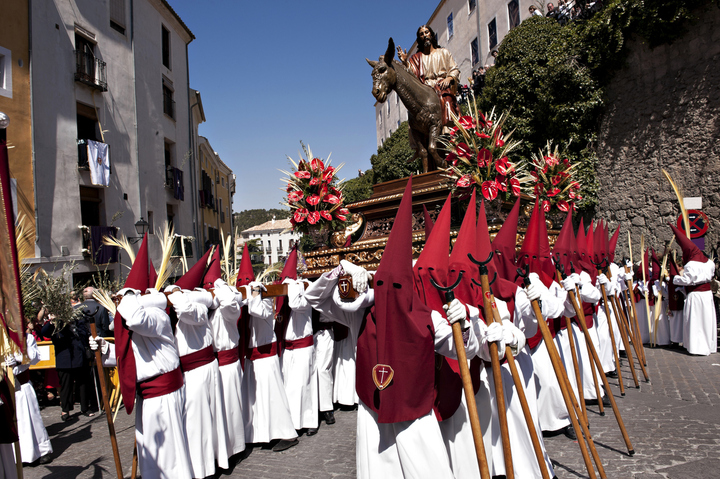The Easter period is known in Spain as “Semana Santa” the Holy Week and is the most religious holiday in the country. Spaniards walk the streets, enrobed in traditional gowns and surrounded by parade floats and marching music.
Semana Santa is widely respected by the Spanish and is celebrated through what’s known as “penance processions” and brotherhoods called “nazarenos” march through the towns, carrying a large cross as part of a tradition that dates to as early as the Middle Ages.
As a member of the Semana Santa processions, you must wear the traditional “capirote” which is a tall hat, shaped like a cone and covering the face. The robes were originally worn by those marching through penance, to hide the faces of the sinners. In addition to this costume, women can also be seen wearing black lace high above the head. Last year, Alicante issued a dress code that stated that the traditional penance-wear did not include red lipstick or skirts above the knee, highlighting the regulations for women who wish to take part in the processions.
Floats festooned with flowers and candles are paraded throughout the towns, usually from the church to the city cathedral, most of them featuring statues of Jesus or Mary.
In Andalucía, you will find the region’s flamenco history seeping into the processions, especially in Seville, the city that holds one of the greatest festivals for this religious holiday. “La Madrugada” is a series of festivals which takes place during the night of Maundy Thursday to the morning of Good Friday and is a key highlight to the holiday – watch out for balcony spectators dancing and singing to the “saetas”, the Spanish religious songs.
Zamora, a city close to the Portuguese border, has held Semana Santa celebrations since 1179 and sees the population increase by five times during the festive week with up to 300,000 people travelling to the area to see the home of Spain’s oldest recorded Semana Santa celebrations.
Salamanca holds festivals which date back to hundreds of years ago with the earliest penance processions being held in 1240 and today, more than 20 brotherhoods organise 16 processions throughout the city.
While Easter eggs are growing increasingly popular in Spain, the traditional snacks of this festival period consist of sweet treats such as “Torrijas” which are baked breads soaked in milk and egg, to then be fried and coated in sugar and lathered in honey. “Pestiños” are sesame flavoured donuts, fried and glazed with honey and sugar and they are another popular treat loved by the Spanish, especially during Semana Santa.
The week of Semana Santa is adored by Spaniards all over the country and if you find yourself taking a stroll through the villages or cities of Spain, you’re likely to come across one of these traditional celebrations, so why not take a look and embrace the festivals that have been cherished for centuries?

